Tag : Jewish art
October 23, 2020 by admin
An Early American Portrait Yields Surprises About Race
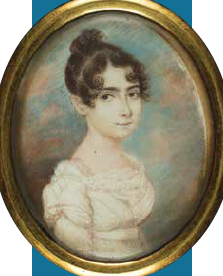
Anonymous, Portrait of Sarah Brandon Moses, ca.
1815–16. Watercolor on ivory.
You’re a historian studying material culture. How does this work connect to what you call “restoring women’s agency as creators of Jewish identity”?
I came to the field of early Jewish American culture in a very roundabout way. Although I have always been an early Americanist, I began my career in Native American Studies and literature. I found myself turning more and more to material objects as a way talking about how people write without words. I found this approach to be particularly important for understanding indigenous communities who have precontact non-alphabetic literature, but also for writing a history of women who were denied access to certain kinds of education or whose words had been deemed “unimportant.”
Alice Walker speaks about this power that objects have in In Search of Our Mothers’ Gardens, when she recalls looking at an African American quilt hanging in the Smithsonian made by “an anonymous Black woman in Alabama, a hundred years ago.” For her, quilts and gardens became a place to identify what she calls “that muzzled and mutilated, but vibrant, creative, spirit” of women whose voices have been silenced. Restoring women’s agency means recognizing not only the forces that kept them silent, but also their creativity and the power of their imaginations. The way they created culture.
Sometimes recognizing how voices were left out can help us expand our vision and hear what was lost. Within Jewish studies, for example, “Judaica” has often been about ritual objects which, at least between 1750 and 1850, tended to be used by men. In The Art of the Jewish Family (Published by Bard Graduate Center, distributed by University of Chicago Press) I am interested in a different kind of Judaica: namely, objects that women used to create Jewish identities and to pass those traditions along to their children and grandchildren. It’s more teacups than Kiddush cups.
When I am looking for a history to tell, I almost always start with the object. Just like when Alice Walker visited the Smithsonian, I want objects that make me pause and say WOW. Like the quilt Walker describes, the objects I talk about are rare, “beyond price,” but also convey some deep feeling. The rareness isn’t about expensive materials (though some are made of precious things). The rareness is a glimpse into a life long lost, a life full of things history had forgotten to tell us about.
How did you find the ivory miniature of a woman born into slavery in the late eighteenth century in Barbados who became prominent in New York Jewish society? And how did you know whose portrait it was?
The ivory miniature I talk about in The Art of the Jewish Family has been a part of the collection at American Jewish Historical Society since the early twentieth century. The sitter is Sarah Brandon Moses (1798–1828), who was born in Barbados and died in New York. At the time of her death, Sarah had given birth to 10 children and was married to Joshua Moses, an Ashkenazi man from a prominent Jewish family. All this was public record.
What we didn’t know before I started researching the family is that Sarah had been born enslaved. Her father was one of the wealthiest Jews in Barbados, and in addition to securing Sarah’s freedom from the family that owned her, he helped her get a superb education at an elite Jewish boarding school in London and gave her a £10,000 dowry. Although Sarah’s early life as a slave wasn’t a secret during her own lifetime, by the time her granddaughter Blanche donated the miniature, Sarah’s origins had been forgotten.
I actually stumbled upon Sarah and her story because of work I had done on Sarah’s older brother, Isaac Lopez Brandon. Karl Watson, a Barbadian historian, had noticed that the records for the island’s synagogue mentioned during a dispute about voting rights that Isaac was the natural son of Abraham Rodrigues Brandon, and that Isaac was a “man of colour,” and “Jew from inclination” who had converted in Suriname. It was fairly easy to show that Isaac Lopez Brandon was the same as the man as in the portrait at AJHS (Isaac later moved to New York and married Joshua Moses’s sister). But it took many, many years to prove that the sister who was in the ivory miniature was the same sister that was manumitted with him in Barbados back in 1801. The miniature was inherited by Sarah’s granddaughter, Blanche Moses. It was one of several miniatures Blanche donated to the archive, including a companion portrait of Sarah’s brother Isaac. Fortunately for us, the Moses family kept good records of who was depicted in each portrait.
In your book, you use the concept of “racecraft,” developed by Black historians Karen and Barbara Fields, to talk about race as an assigned cultural status rather than a biological fact. How does this concept inform your understanding of the intersectional identities of Jews of color today?
I find the idea of racecraft helpful on so many levels. Racecraft is a way of breaking down structural racism and thinking about how structures get reinforced. Fields and Fields argue that race isn’t assigned arbitrarily, but through social practices, particularly sumptuary laws, rituals of deference and dominance, kinship, and the gaze. In the era I study, the notion of racecraft can help us think about how both non-Jews and Jewish communities marked Jews of color, and in doing so suggested that they were not “full” Jews. One way that this happened was by dividing communities into yachidim (European, full members) and congreganten (mixed-race or second-class Jews). Another way was marking certain people’s ketubot (marriage contracts) with the phrase “emancipated Jews,” which slyly referenced their African ancestry. Neither of these strategies have any basis in halacha (Jewish law). In today’s language, we would probably talk about this in terms of inclusion and see this as a fail.
While I don’t know of any Jewish American communities that have these practices today, racecraft can help us think about how we still fail some of the time at being inclusive. Expectations about dress, about who has authority in a community, who needs always to be friendly and smile, DNA, and who “looks” Jewish (and who decides what Jews look like!) all insinuate ideas about who is a “full” Jew. In my mind, the point here is not to pretend that we don’t see cultural differences among Jews, but to remember all Jews are part of subcultures. The ability to have your own subculture be unmarked is itself the work of racecraft. Bringing this back to the idea of intersectionality, the recent uprisings across the United States have brought this problem to the fore, at least where I live in Portland, Oregon. Each of us stands at the intersection of various identities, whether we are a Jew of color or not. Being inclusive doesn’t mean asking Jews of color to leave the other ties in their lives at the door. If I ask someone to put aside their Black, indigenous, Asian, or Latinx ties when they come to synagogue, what I am actually saying is Jewishness is by default a white space. Racecraft helps us understand how Jewish space got crafted that way.
You write, “Although Sarah’s mother eventually gained her freedom and even inherited property, she never legally gained her lover’s last name.” When there was such a power and privilege differential between this man and Esther, who was a slave, wouldn’t it be logical to consider their relationship to be one of coercion? Why do you refer to Abraham Rodrigues Brandon as Esther’s “lover” and not her “rapist”?
I think authors always worry about whether they are getting words exactly right, and for me the distinction between Abraham being Esther’s lover or rapist was one of the ones that kept me awake at night. Perhaps part of the problem is that neither lover nor rapist seems to encapsulate everything we know about Esther and Abraham. The term rapist gets at many things. For example, the power and privilege differential between Esther and Abraham was extreme, particularly around the time of Sarah’s birth. In Bridgetown (Barbados) enslavers ruthlessly hired out enslaved women for sexual purposes, either to brothels or on a less formal basis to sailors and townsmen. It is hard to imagine that Esther was completely free to make up her mind to instigate the relationship with Abraham. Yet after she was free and owned property of her own, she continued to live with him. In fact, when she came to the United States towards the end of her life, she was accepted by the Jewish community of New York as his wife and used his last name, even though there is no evidence that they ever legally married. Did she stay with him because she wanted to, or because she feared what would happen to herself or her children if she left him? We just don’t know. Esther was certainly Abraham’s lover in that she was in a long-term sexual relationship that was not legally recognized. But lover has a second meaning. Did Esther love Abraham? Possibly, but quite possibly not. Love turns out to be one of the hardest things to find evidence of from the past, particularly if the person in question wasn’t literate. This issue of gaps and silences is one of the concerns I keep returning to in The Art of the Jewish Family. If you live in a society that recognizes that your emotions and desires matter, that is a privilege. The erasure of the record of feelings is itself a kind of violence. This is true now, but all the more so in the nineteenth century, when emotions were seen as central to one’s true self.
I’m curious about what you are working on next. Did you uncover more material on Sarah?
Yes! Sarah Brandon Moses has really become an obsession of mine. I just finished a book on Sarah and her brother Isaac called Once We Were Slaves: The Extraordinary Journey of a Multi-Racial Jewish Family that should be out next year. In it, I start with the story of Blanche Moses, Sarah’s granddaughter, and ask the question about how a family loses its past.
The subsequent chapters follow Sarah and her brother as they move around the Atlantic World, tracing their journey as they grow up, marry, have children, and leave a legacy for future generations. In the final chapters I look at what happened not only to their children, but to their descendants today. For me,
Sarah and Isaac’s story is important not only because they are interesting people, but also because it reveals a history of a largely forgotten community. While their wealth made them unusual, Sarah and Isaac were not the only Jews with African ancestry during this era. Their story mirrors the history of other Jews of color, who made up as much as 10% of early Jewish communities in which Sarah and Isaac lived. Before now, that story was largely hidden from history. Sarah and Isaac’s story will be helpful, I hope, for Jews of color, but also for white Jews, as it reminds all of us that the story of Jews of color has been important to American Jewish history for a very long time. Sarah wasn’t a side note: her children were key players in New York’s Jewish community. One of the most fascinating things that came out of my sleuthing was tracking down Sarah and Isaac’s descendants. I am so grateful to all of them.
Laura Arnold Leibman teaches English and Humanities at Reed College.
- No Comments
November 4, 2019 by admin
Linda Olivetti Kohen’s Unsentimental Art
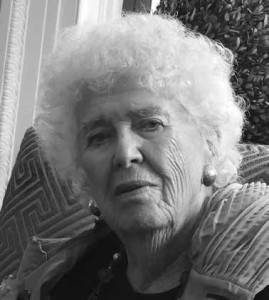
Linda Olivetti Kohen, photographed by Joan Roth in NY
“I always paint autobiographical things, because it is what I know best. I want to paint things not for what they are, but for the emotions they provoke in me. That mysterious sensation, for example, caused by a room, a corner, where at one time I felt something.”
Linda Olivetti Kohen, 94, made these remarks for a 2012 exhibition of her paintings; when she visited New York recently before returning home to prepare for a major solo exhibition in Montevideo to open in December, she showed Lilith the catalogue of that earlier show of her dazzling, jewel-toned work. Kohen has lived in South America since fleeing Italy at 15 with her family, in 1939. Despite transitions of place and culture, she has continued to paint almost every day throughout her life, she told Lilith in a wide-ranging conversation. Many of Kohen’s paintings have an air of emptiness: an unoccupied chair or bed, a set table without diners, a series of corridors, a recurrence of suitcases. And several show parts of her body as she herself sees them, like the sequence with her feet resting on the floor as she sits on a bed. The work is mysterious and very beautiful, conveying loss but no lugubriousness or sentimentality.
In person, Kohen is charming, moving easily between English and, when speaking with her daughter, Spanish, talking about her early life in Milan, before Mussolini enacted his racial laws in 1938. “What was it like? Paradise. When we left Italy I didn’t have the right documents to go to university. And there was a war going on, so I just kept painting.”
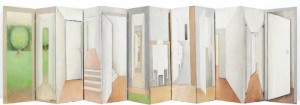
“El gran biombo (The large screen),” 2005.
- No Comments
July 9, 2019 by admin
The Avant-Garde Artists She Hangs on the Walls
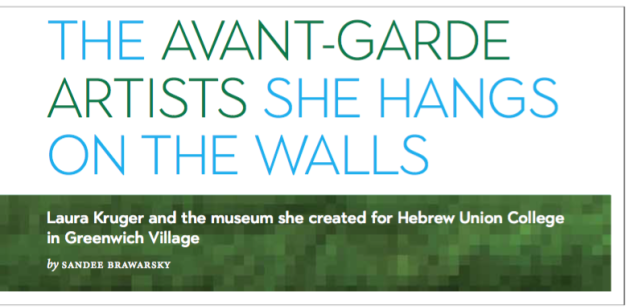
A good curator’s hand might be unseen in an initial look around an exhibition. Yet the curatorial vision enhances the pleasure of seeing works of beauty and imagination, and shapes how viewers encounter the art—and can even reshape their outlook.
In the Fall of 2018, after more than 30 years of distinguished work including the launch of 120 art exhibitions, curator Laura Kruger was granted an honorary doctorate at Hebrew Union College—Jewish Institute of Religion for her visionary leadership. As the curator of the art space in the College, she earned the degree for her ongoing connoisseurship, imagination, expertise and devotion to the Reform seminary and its museum.
A woman of passion for the arts and the ever-growing collection of artists she has shown and promoted, Kruger knows what she likes, can explain it well and loves doing that. Talking with her is like a class in art appreciation with a master teacher. Her definition of Jewish art is broad and inclusive. As she says in an interview in her office a few doors above the recently renamed Dr. Bernard Heller Museum at h.u.c., “I don’t define Jewish art by the birth certificate of the artist. I am intrigued in how a person uses Jewish heritage.”
Over the last decades she has seen this art become more self-assured. “What passes for Jewish art in a lot of places is something with a Magen David [star of David] or menorah,” she says. “I’m not talking about that. I’m interested in someone who connects with his or her faith, who reads, studies, who feels comfortable stating something.
“Can I define a Jewish aesthetic? No, because I don’t want to. I don’t think there’s a Jewish style of painting. I think there is an ethos in choosing a subject and perhaps an implied message from the subject that’s intuitive to the artist.”
In her 2018 book, Curatorial Activism, curator and arts writer Maura Reilly advocates for rule-breaking exhibitions that challenge identity-driven social issues. Kruger’s most recent shows, addressing issues like home and homelessness (and the thin line between), climate change, sexuality and the nature of evil challenge viewers to think anew, and in the context of, but not limited to, Jewish identity. Her shows are less about art history and academia, and more about new perspectives and new ideas. Her activism extends to inviting a broad range of artists to participate, reaching across ages, backgrounds, artistic genres, materials and religious perspectives (and all are not necessarily Jewish); she’s proud of the diversity she presents.
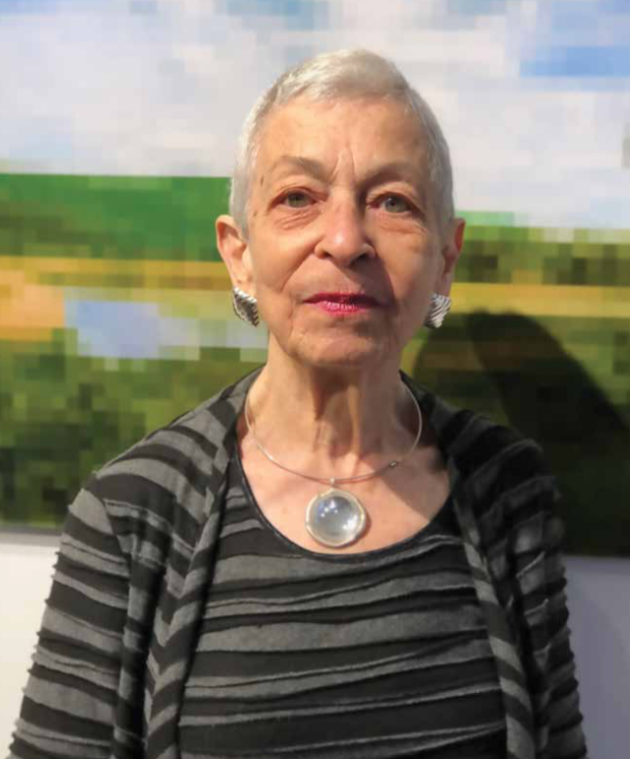
As a curator, Kruger is energetic and courageous. In the h.u.c. show “Envisioning Maps,” which was highly original in its juxtaposition of work showing land, space and terra incognita (the spaces on earth not yet imprinted), she brought together paintings and sculpture that used actual maps or the concept of maps, raising important questions about history, borders, migration and ecological disaster. Paula Scher’s painting “Israel” is covered with names of places in the shape of the State of Israel; although not meant to be read as a map, perhaps it suggests how words create history. The power of this exhibition was in how Kruger turned the concept of a map around and around, probing deeper, as she included a piece about an eruv, or symbolic enclosure (“Venice Eruv” by Ben Schachter), the planet’s fragile state (Ann Perry’s “Lamentations: Continental Drift”) and Karen Gunderson’s depiction of what the sky might have looked like to the Jews of Denmark on the night in 1943 when they were to be rounded up and sent to concentration camps, but were instead offered refuge by local citizens (“Constellation 4: Copenhagen”).
As she writes in the introductory essay to the catalog, “Jewish maps defined more than places of Jewish ownership; they encompass the places where Jews once lived and were forced out by pogroms, inquisitions, and the Shoah. They include the maps of memory of immigrants, Biblical Israel, and modern Israel.”
In her inclusiveness and wide-ranging views, Kruger shows again and again the diversity of Jewish views on a single subject, and the many ways to be Jewish and embrace Jewish values.
And in another inspired collective show, “Paint by Number,” Kruger writes that “Numbering creates a scaffold of order and continuity—virtually everything we are, do, and interface with is a number.” She cites historical dates, Biblical stories, the meaning of counting and symbolic numbers; the exhibition title evokes, with some irony, the preprinted artist sets popular in the 50s where people would apply color between the lines in designated areas, and the freedom of artists to reject any such rules.
Unabashedly, she believes that a museum, an exhibition, must have a moral core. She has no problem pushing Jewish values. We meet in the office she shares with colleagues, filled with art on the walls, Judaica on the shelves and still-wrapped artwork sent for an upcoming show.
“My job is a couple of things, to select a subject that is broad enough to embrace what needs to be said Jewishly in this moment in time and the artists who are strong enough to maintain their own voice in a group dialogue. That’s what the show is about, not an extended sentence from wall to wall, not a cacophony, but a continuity that leads to another thought to another thought,” she says.
“The artists address Jewish issues, not necessarily in overt Jewish ways but in deeply regarded Jewish ways.”
In 2007, Kruger did a show featuring the work of an artist who has become a good friend, “Judy Chicago; Jewish Identity.” Chicago’s painting “Rainbow Shabbat from the Holocaust Project(1992)”, a stained glass piece that is part of her “Dinner Party” series, powerfully influenced the way Kruger thought about the Shoah. She thinks that the piece helps people confront their own nightmares, and also frees up those who didn’t experience the Shoah to talk about it. For Kruger, the painting also expands understanding of how inclusive a Shabbat table can be. Always, Kruger is interested in the rainbow, in making room for all.
 Kruger sees art as part of the communal dialogue, making its own statements. More than a decade ago, in conjunction with the Jewish Women’s Project Ma’yan, she showcased a variety of artists’ renditions of Miriam’s Cup, helping expand Passover’s ritual possibilities. In the 2010 show “A Stitch in Time: Provocative Textiles,” Kruger presented “Coat of the Agunah” by Israeli-American artist Andi Arnovitz, who created a coat made of ripped-up digital scans of antique ketubot, or marriage contracts. The coat’s hand openings are sewn up—the wearer can’t escape—reminding viewers of the bondage many Jewish women still face in seeking freedom from recalcitrant husbands. Helene Aylon’s “The Book That Will Not Close,” featured in a 1999 exhibit devoted to the artist’s work, is an interactive, tactile piece in which tissue paper is interwoven onto every page of a Hebrew Bible. On those pages, she underlined in pink marker every phrase with a negative view toward women, or showed that their voices are absent. Though Aylon is underscoring that women are missing from the dialogue, still, she would not deface the actual pages.
Kruger sees art as part of the communal dialogue, making its own statements. More than a decade ago, in conjunction with the Jewish Women’s Project Ma’yan, she showcased a variety of artists’ renditions of Miriam’s Cup, helping expand Passover’s ritual possibilities. In the 2010 show “A Stitch in Time: Provocative Textiles,” Kruger presented “Coat of the Agunah” by Israeli-American artist Andi Arnovitz, who created a coat made of ripped-up digital scans of antique ketubot, or marriage contracts. The coat’s hand openings are sewn up—the wearer can’t escape—reminding viewers of the bondage many Jewish women still face in seeking freedom from recalcitrant husbands. Helene Aylon’s “The Book That Will Not Close,” featured in a 1999 exhibit devoted to the artist’s work, is an interactive, tactile piece in which tissue paper is interwoven onto every page of a Hebrew Bible. On those pages, she underlined in pink marker every phrase with a negative view toward women, or showed that their voices are absent. Though Aylon is underscoring that women are missing from the dialogue, still, she would not deface the actual pages.
Kruger’s vision is grounded in the present, tied to important themes of the day, although she is also drawn to how artists deal with memory, both personal and collective. She says, “I embrace art history in the most positive way I can. I’m not making comparisons between the past and present. The present is where we are now.”
“When people come in here expecting to see old-fashioned Jewish art, they are taken aback. We are not a history museum,” she says.
Among the many other artists she has shown in individual and group shows are Hanan Harchol, Tobi Kahn, Laurie Gross, Tamar Hirschl, Jacqueline Nichols, David Wander, Mark Podwal and Archie Rand. Over many years and exhibitions, she has shown the work of Nathan Hilu, who died in April at age 93—still painting until his last days—and personally championed the work of this outsider artist, trying to connect him with other galleries and museums, and also making sure that he had art supplies. She remains con dent that, posthumously, he’ll receive deserved recognition.
“I believe art is a language. People who cannot express themselves in words do it amazingly well in art. How the viewer interprets the art—that’s the conversation,” she says.
Joyce Ellen Weinstein, a painter who has known Kruger for more than 25 years, stops by the office and later says, via email, “Laura is an extremely thoughtful curator who is true to her vision and never takes her role lightly. I know that among my artist peers being selected for an exhibition curated by Laura is always a big deal and an honor.”
Importantly, through her group shows, Kruger has created a community of artists whose work may touch on Jewish themes, and who may not have been aware of one another. A few years ago, the Jewish Artist Salon got underway with the involvement of many of “Laura’s artists,” to further the work of building community.
Kruger sees her role, in part, as a guide, “able to articulate the essence of the artwork so that someone who does not have background either in the subject or the practice of art feels comfortable or understands what they’re looking at.” To that end, she takes great care in creating exhibition labels that are informative and non-intrusive—the labels might include quotes from the artist illuminating the work, or the back story of its creation. She recognizes that space dictates what a curator can do. For some of the artists, the museum also functions as a gallery, an opportunity to sell their work.
Kruger is a youthful 83-year old who still carries herself like the dancer she once was, at once elegant and down-to-earth. There’s something about being a curator that carries over into all that she does: Her home is filled with contemporary art, and she continually rearranges the works on her walls. She dresses stylishly with well-designed jewelry, and she can’t walk by a potted plant, anywhere, without making efforts to prune it, pulling o the dead leaves.
Her career path has been indirect, but she has had a robust, arts-driven life. She grew up in Brooklyn where her father was a businessman and her mother a commercial artist. She started studying ballet at age 6, and danced professionally from 1948 until she got married in 1956, dancing at Radio City Music Hall, the New York City Opera, and with the Ballet Russe of Monte Carlo. She danced while attending New York City’s High School for the Performing Arts and Hunter College—and also modeled wedding gowns for a Fi h Avenue bridal salon.
She then discovered her instinctive talents of selling—she loved describing what she saw, talking about the gowns, and she moved from model to salesperson. She flourished. As she says, “I just loved talking.”
Her first department store job was at the long-closed Arnold Constable. There, she “fell in love with the idea that you could change someone’s life—‘Just try this on’—or you could tell some-one why they looked good. I didn’t think of myself as a shop girl. I liked fashion.” Quickly, she was promoted and then recruited to join Bloomingdale’s, and then left to start her own business, a jewelry shop on Madison Avenue featuring handmade and one-of-a- kind pieces. For her, jewelry was like sculpture, or “wearing a piece of art.”
“Stores are about signage and display, how you position something within the store,” she says, sounding like she has been curating throughout her retail career. “I’m not certain that it can be taught— it’s like a play of energy between pieces, colors, shapes, subject matter. If you’ve been looking at art all of your life, you develop your own pattern of how you see.” While she can forget a line of a poem, she says, she never forgets an image or color tone.
Her interest in Judaica was sparked in 1978. The mother of a metalsmith entered her shop and took out a menorah her son had made. Kruger agreed to place it in her window, and a couple of days later someone bought it, so she brought in others. “That’s how I started in the Jewish world. Through that one menorah.” While she knew a lot about contemporary art, she didn’t know much about Judaica—yet. She also opened shops in department stores carrying her jewelry, and then her Judaica. A er 14 years, she closed her gallery and organized a gift shop for the Museum of Arts and Design, where her husband, Lewis Kruger, is now chairman emeritus.
Then, through a chance connection in the Long Island resort town where her parents had a home, she was introduced to Hebrew Union College and their collection of art and Judaica; at that point all of it had been donated to the college rather than collected intentionally. In 1994 she joined the sta of the College, and saw the opportunity to incorporate contemporary art into their educational efforts, eventually establishing the museum.
“I can’t imagine living without art,” she says. “Art is a big embrace.”
Sandee Brawarsky, an award-winning journalist and editor, is the culture editor of The Jewish Week and author of several books, most recently 212 Views of Central Park: Viewing New York City’s Jewel from Every Angle.
- No Comments
 Please wait...
Please wait...